NeptuneCafe presents
advertisements


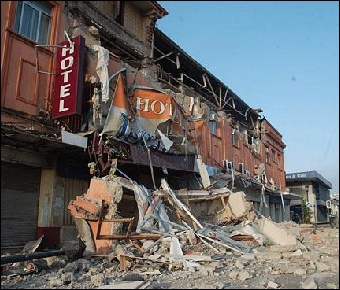
Chile's 8.8 Earthquake
NewsScope; March 1, 2010; Following on the heels of Haiti's devastating earthquake, Chile experienced one of the largest earthquakes in modern history when an 8.8 temblor struck at 3:34 am local time (Chillan, Chile). The #1 largest earthquake hit in the same region on May 22, 1960. Chile's national horoscope (February 12, 1818*; Santiago, Chile) helps get some perspective on these events.
We don't have an accurate birth time for Chile's horoscope, so noon is the default setting. However, Jupiter at 4º Capricorn is likely angular or the chart's ruling planet. In any case, the natal dynamics in this horoscope establish a pattern of extreme volatility in the nation's evolution. Most significantly, Mars, the natural ruler of the military, opposes Uranus and Neptune, which in turn square Pluto.
Historically, Chile's main events feature the tense activation of Jupiter. For example, the military coup that empowered Augusto Pinochet on September 11, 1973 took place as transiting Saturn and Pluto were squaring each other while aligned with Chile's Jupiter. Pinochet's military dictatorship began as Chile's progressed Mars was trine Jupiter. Over the next few years, as progressed Mars opposed Saturn, the brutal nature of his regime became evident.
Similarly, the earthquake that hit last Saturday also involved a Saturn-Pluto square aligned with Chile's Jupiter. In addition, the transiting Ceres-Uranus square was perfectly aligned with Chile's Neptune-Pluto square. The 1960 quake hit when transiting Jupiter was conjunct natal Jupiter, and transiting Pluto was trine natal Jupiter. Although Chile's many Aquarius placements lend it to developing a more classless society than its Spanish roots would suggest, the tense natal dynamics still bring periodic devastating disruptions.
* Chile's birth data is from Nicholas Campion's
The Book of World Horoscopes.
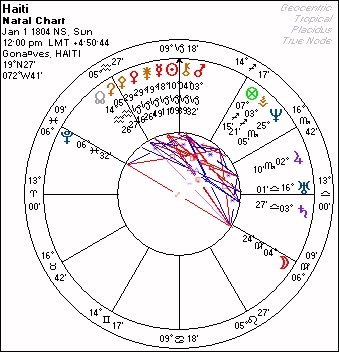


Haiti's Earthquake
NewsScope; January 18, 2010; The scale of the disaster so overwhelmed Haiti that government officials and national police simply abandoned their posts. The Red Cross estimated some 50,000 had died, while relief efforts were stymied by widespread transportation and telecommunication failures. President Obama sent the U.S. military in to manage the security and relief issues and the hundreds of millions of dollars pledged by world leaders.
Haiti's horoscope (January 1, 1804; Gonaives, Haiti; noon) reflects the long and difficult history of the country, as well as the current devastation. The Capricorn Sun attended by six other placements in Capricorn shows the tendency for strong, patriarchal government. But
with a Mars-Chiron conjunction squaring Saturn, the government has often been ruled by corrupt dictators supported by a brutal and oppressive military.
At the moment of the 7.0 earthquake (January 12, 2010; 21:53 UTC), transiting Saturn and Pluto were squaring each other while aligned with Haiti's Mars-Chiron square Saturn. If we think of the transiting Saturn-Pluto square as a crisis of authority (as described here last week), we can see how this incident left Haiti without a functioning central government.
Natally, the Moon opposes Pluto in the Virgo-Pisces polarity, which describes a population that has been victimized politically, socially and economically. Challenging transits and/or progressions to planets in the Virgo-Pisces axis often lead to disaster. In Haiti's case, the progressed Moon and Pluto were conjunct in Pisces while being squared by progressed Mars. Here we have the indications for violence and chaos that could have been seen beforehand had any astrologers been tracking Haiti's national horoscope.

The Haiti-Chile
Quake Connection
February 28, 2010;
The Jan. 12 Haiti quake, and the Feb. 27 earthquake in Chile, were both on the same line of geographic longitude...about 73 degrees West.
The annular solar eclipse of Jan. 15, 2010 featured Jupiter, Neptune, and Chiron, precisely on the IC(-180- Midheaven) along this longitude- perhaps sensitizing it to underwater seismic activity(Jupiter-0-Neptune), and related tsunamis.
We can now see, with the gift of hindsight, that the ACG(AstroCartoGraphy) map for the solar eclipse, did clearly foreshadow major events in Haiti and along Chile's coast.
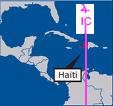


Moon Wobble
Earthquakes often occur soon after an eclipse, or very near the time of an eclipse. This likelihood increases if other quake indicators are in place and if it is also a Total Eclipse. This heightened activity is due to what we might call Moon Wobble effects.
A Moon Wobble occurs when the Sun forms a square to the lunar North Node. The energy is similar to that associated with eclipses, when the New or Full Moon aligns closely with the nodes.
It was astrologer Carl Payne Tobey (1902-1980) who coined the term Moon Wobble. After a painstaking examination of a large number of major disasters, involving fires, bad weather and loss of life, he found that many of the most serious and traumatic catastrophes occur in association with eclipses, especially when other dire planetary aspects coincided. He also found however that such evils are not exclusively linked to eclipses and may also occur when the Sun forms a T- square to the nodal axis. He called this a Moon Wobble, for it is when the Moon is wobbling in its path by declination. So, when the Sun is conjoined with either node or in this T – square to the nodal axis, this raises the likelihood of major environmental damage, loss of life or property, or other dire effects.
These types of problems are more likely if other troubling planetary configurations occur at the same time. The most notable times for disastrous occurrences range from a few days before to a few days following the exact aspect.
The Moon Wobble effects of the January eclipse were strongest on January 11, 2010, one day prior to the destructive earthquake in Haiti. The other 2010 Moon Wobbles occur April 6; July 3 (between two eclipses); and September 30.
Besides being more common near eclipses, earthquake activity increases near Full Moon.
Location
One way to narrow down the location where a sizable earthquake might occur is to run an Astrolocality map of the eclipse suggesting the probability for a quake, to see where on the globe the Mars and Saturn lines run as these reveal problem spots. If there are planets in Fixed signs or important conjunctions, those planet lines should be included. We can even compare this eclipse map to an Astrolocality map of the current Ingress to see if certain areas show up as problematic in both. Watch for an emphasis of planets on angles.
When the January Solar Eclipse chart is relocated to Port-au-Prince, Haiti, it shows Jupiter closely conjunct the Fourth House cusp with Neptune and Chiron close by, opposed by Mars in Fixed Leo, reflecting the potential catastrophe and devastation. The same goes for Santiago, Chile. Especially when the problem spot lies in the Ring of Fire, as Chile does, this raises suspicions.
At the time of a quake many aspects will be found between the planets, however, these planets will also form a number of aspects to the previous eclipse and to the planets places at that time. So, while an eclipse may denote a coming earthquake it won’t occur until the planets form numerous aspects to one another and to the eclipse.
Haiti’s earthquake occurred during strong Moon Wobble effects as that Total Solar Eclipse featured planets on the angles in Fixed signs in Haiti, accompanied by the extremely forceful Saturn/Pluto square. As noted by Michael Wolfstar in his recent NewsScope column, that square formed difficult aspects to Haiti’s natal planets. In fact, the Ascendant of the earthquake chart opposed Haiti’s (recently eclipsed) natal Sun while transiting Mars crossed Haiti’s South Node.
The earthquake in Chile one day before a Full Moon appears also to be tied to the Lunar Eclipse of July 7, 2009. That eclipse featured Jupiter and Neptune at 26º Aquarius, in square to Mars at 26º Taurus. Chiron was also in Fixed Aquarius as was the North Node. Relocated to Chile, disruptive Uranus fell on the MC, opposing Saturn near the IC. At the time of Chile’s quake, Mercury and Neptune were transiting 26º Aquarius, tying into the eclipse pattern. Transiting Moon in Leo opposed the outer planets in Aquarius. Transiting Mars conjoined the Lunar Eclipse South Node in Leo, while the transiting North Node (Capricorn) and the Ascendant of the earthquake chart conjoined fairly closely with the Lunar Eclipse degree!
Summary and Forecast
To review some steps we might take to discover where and when an earthquake might occur:
1. Watch for eclipses in which many planets fall in Fixed signs, especially when there are afflicting aspects involving these, and in particular if other dire aspects form at the same time.
2. Run an Astrolocality map for this eclipse to see where problem spots lie on the globe.
3. Be alert for a potential increase of activity near the time of an eclipse, a Moon Wobble, or a Full Moon.
4. Watch for the transiting nodes to cross an earlier suspicious eclipse; within three degrees of the Sun/Moon.
5. Be alert for problematic aspects at this time, especially when these form among themselves AND tie in with the particular eclipse that suggested earthquakes.
Based on that Lunar Eclipse at 15º Capricorn, a degree that will soon be transited by the North Node, Chile continues to be a hot spot for quakes. The Peru-Chile Branch of the Ring of Fire as well as the Middle America Branch show potential for sizable quakes even as we move toward summer and the Lunar Eclipse of June 26. For now, watch late March (30th) early April (6th), and especially around the Full Moon of April 28th. As summer nears, the conjunction of Jupiter with Uranus may activate big quakes in the Kamchatka Peninsula in Russia. I’ll continue to study and share my observations in my monthly U.S. New Moon report.
Is it possible to predict earthquakes? Astrologers David Crook, Celeste Teal, Michael O'Reilly, and Richard Nolle share their insights about earthquake activity in 2010. The planetary tools used here may some day help forecast when and where the most devastating quakes take place.
The Line-Up - Here's how four astrologers have portrayed the metaphysical effects of the planets on earthquakes.
David Crook - The chief culprit behind the earthquakes in Haiti and Chile seems to have been the Solar Eclipse of Janaury 15, 2010, as first noted by David Crook in his Stellar Insights blog. His entry is shown to the right here, accompanied by the horoscope for the January 15, 2010 Solar Eclipse relocated to Santiago, Chile.
Celeste Teal - briefs us on what causes earthquakes from an astrological perspective. Her explanation includes discussion of Moon Wobble, a term coined by astrolgoer Carl Payne Tobey. She also explores where an earthquake might strike, and presents a five-point summary and forecast for 2010.
Michael O'Reilly - The giant earthquakes in Haiti and Chile had strong astrological correlations in their respective national horoscopes. Excerpted from the two NewsScope articles about the quakes, O'Reilly gives the astro-journalistic follow-up, including some historical background and translation of the chart's symbolism.
Richard Nolle - has been studying and writing about the SuperMoon for some twenty years. His 2010 World Forecast, written in December 2009, included some remarkably good calls concerning the potential and timing for major earthquakes based on the SuperMoons of 2010. Here's an excerpt with graphic illustrations.
The Astrology of
Earthquakes
The Moon and Eclipses
Evidently, the Moon's gravitational pull affects earthquake activity, as do solar and lunar eclipses. Astronomers don't give much credence to the influence of eclipses after the event, but astrologers do. Figuring out what causes earthquakes could be a full time job for anyone who could piece together the gems available from reputable astrologers. As one of the writers on this page said, "We need a whole panel of astrologers working full time! By region, by checking various countries for hard transits, etc. It seems almost bizarre that there is no funding or government support for this kind of research work."
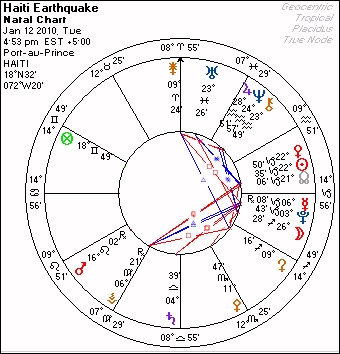
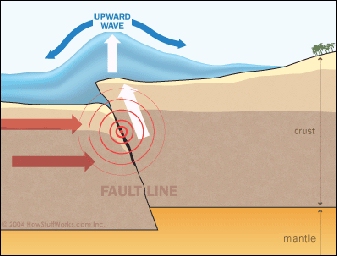
Celeste Teal on the 2010 Earthquakes:
Moon Wobble, Location, and Forecast
Earthquakes are caused by the action of eclipses, often when an eclipse falls in a Fixed sign, or, if there are other planets in Fixed signs at the moment of an eclipse, earthquakes often occur in those parts of the world where these planets are rising, setting, culminating, or on the nadir.
Noted in my January U.S. New Moon report was the increased risk for earthquakes based on the triple conjunction of Chiron/Neptune/Jupiter in the Solar Eclipse chart of January 15, 2010. With these planets in Aquarius, opposing Mars in Leo, Fixed signs, this propensity for earthquakes rise.
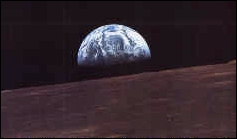
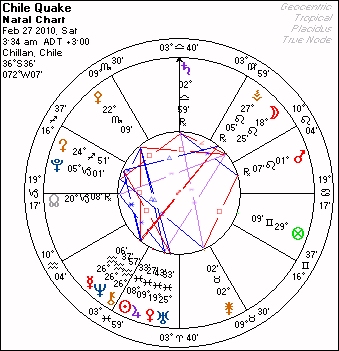

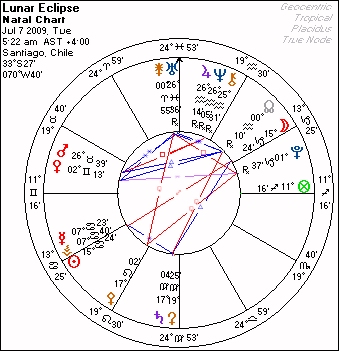

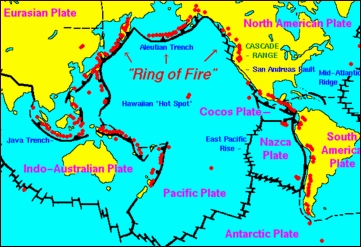
There's much more. See Celeste Teal's Decoding Earthquakes
Comments, questions, suggestions? Let us know what you think. Email wolfstar@neptunecafe.com
2010 World Forecast
Obviously it won't be the case that all hell will break loose all over the world within a few days either side of the SuperMoons of 2010. For most of us, the geocosmic risk raised by SuperMoon alignments will pass with little notice in our immediate vicinity. This is a rather roomy planet, after all. But the fact remains that a SuperMoon is planetary in scale, being a special alignment of Earth, Sun and Moon. It's likewise planetary in scope, in the sense that there's no place on Earth not subject to the tidal force of the perigee-syzygy.
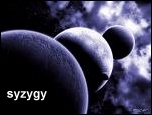
Of course, earthquakes and volcanic eruptions don't go wandering all over the planet. They happen in predictable locations, like the infamous "Ring of Fire" around the Pacific plate. If you're in (or plan to be in) a place that's
subject to seismic upheaval during a SuperMoon stress window, it's not hard to figure out that being prepared to the extent that you can is not a bad idea. Likewise, people on the coast should be prepared for extreme tidal surges. Severe storms on the other hand can strike just about anywhere, so it behooves us all to be ready for rough weather when a SuperMoon alignment forms.
"I do anticipate a more than usual level of major storms, quakes and volcanic eruptions associated with this year’s SuperMoons and eclipses"
- Richard Nolle, 2010 forecast
Like eclipses, there are typically four or five SuperMoons annually. We get five this year. (There’s not another year that gets short shrift in SuperMoons until 2013, which has only three.) All of the 2010 SuperMoons are closely associated with another extreme lunar factor: the Moon’s crossing of the celestial equator (the plane of Earth’s equator, projected out into space). This close association between the lunar perigee and the lunar equatorial crossing is something that slips in and out of synch. The two have been meshing within a couple days of each other from summer into fall of 2009, a period of notable storm and seismic activity.
Don’t get me wrong, 2010 doesn’t shape up to be one of those geophysical disaster years like 2005-2007, when the Moon reached the apex of its 18.6-year declination cycle – the so-called lunar standstill. Maximum lunar declinations were running in excess of 28º back in 2005-2006. For 2010, the peaks are down into the 25º range. Extreme lunar declination years tend to have extreme storms and seismic activity. Think Hurricane Katrina, the December 2004 Sumatran earthquake and monster tsunami: these natural disasters accompanied the most recent peak in the lunar declination cycle.
We’re well away from those high declinations and associated risks this year, but having a string of SuperMoons each very near the monthly lunar equatorial crossing is a combination that enhances the prospects for geophysical extremes – even more than an ordinary SuperMoon, which is in its own right a harbinger of enhanced disturbances in the skies, seas and crust of our home planet. I’m not expecting a Katrina or Sumatra class year of hurricanes or seismic activity in 2010, but I do anticipate a more than usual level of major storms, quakes and volcanic eruptions associated with this year’s SuperMoons and eclipses.
What are SuperMoons? How do they influence the activation of earthquakes? Get the inside scoop with NeptuneCafe's guest astrologer Richard Nolle

